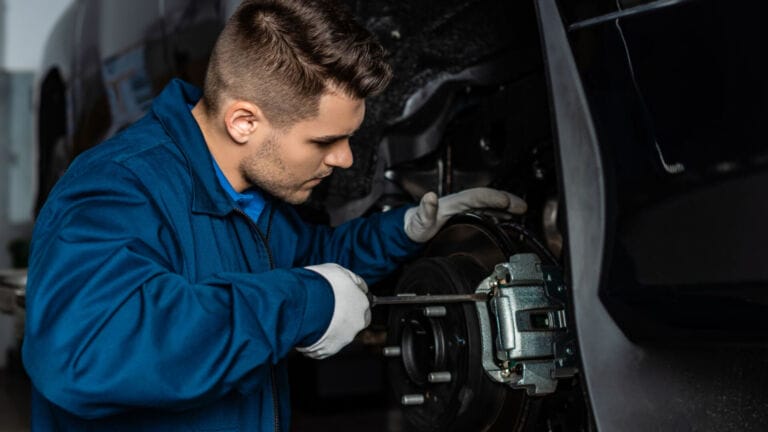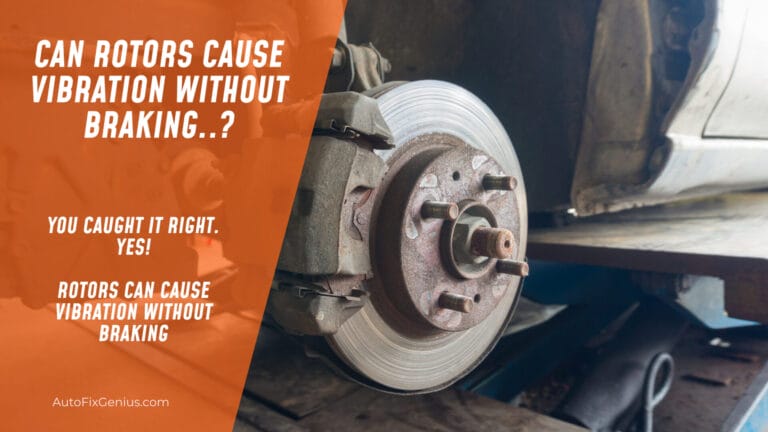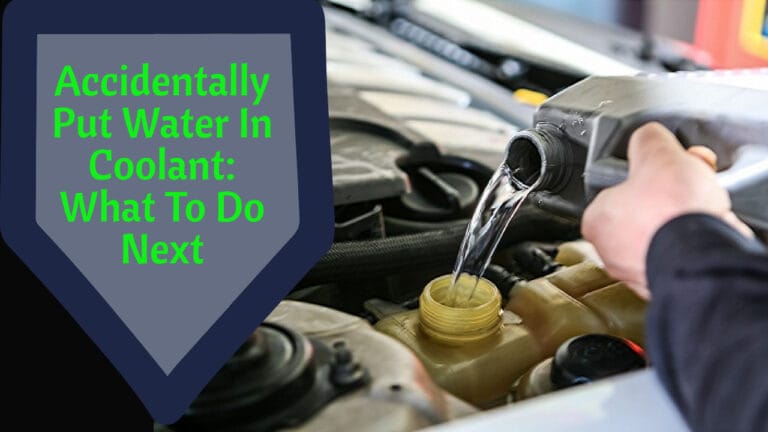Can a bad brake caliper cause vibration? Quick Fixes
Yes, a bad brake caliper can indeed cause vibrations in your vehicle. The vibrations are often a result of uneven brake pad wear, caliper misalignment, or seized caliper pistons, disrupting the smooth operation of your braking system.
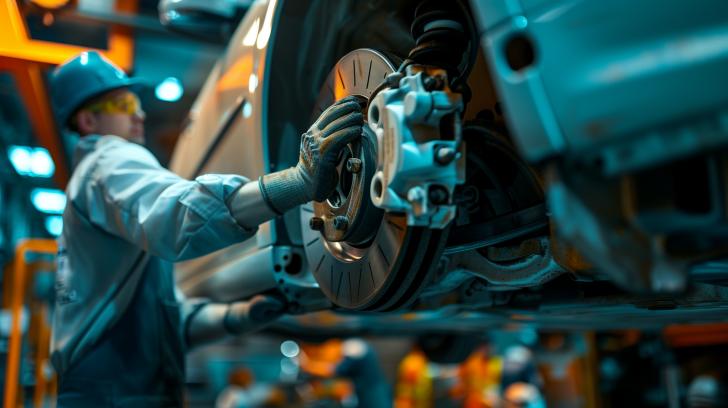
The brake caliper applies pressure to the brake pads, which press against the rotor to slow down or stop the vehicle. When a brake caliper is faulty or damaged, it is not perfectly aligned, so it may not apply even pressure to the brake pads when you apply the brakes. As a result, the brake pad stuck, causing uneven braking and vibrations. This can be felt through the steering wheel or the brake pedal.
Let’s know how can a bad brake caliper cause vibration and how to fix it in easy ways.
How Do Brake Calipers Work?
Brake calipers operate on hydraulic pressure. It consists of two main parts: the housing and the caliper piston. The housing holds the brake pads in place and protects the internal components. The pistons, however, are responsible for applying pressure to the brake pads.

When you press the brake pedal, hydraulic fluid is sent from the master cylinder to each brake caliper through hoses and lines. This hydraulic pressure causes the pistons inside the caliper to extend outward, pressing against the inner surface of the brake pads. As a result, these pads are pushed against both sides of the rotor, generating friction. This friction converts kinetic energy into heat and effectively slows down the rotation of the wheels, bringing the vehicle to a stop.
Signs Brake Calipers Are Causing Vibration
It might be a bad brake caliper issue if you feel shakes or vibrations in the steering wheel or the whole car when braking. But how can we be sure a bad brake caliper is the culprit?

You can inspect the brake caliper and look for the signs-
- Look for excessive rust on the caliper.
- Check for uneven wear on your brake pads
- Find if there are any loose or stuck caliper pins or bolts
- One-side pulling or uneven braking when you apply the brakes
- Listen for any unusual braking sounds, such as grinding or squealing noises.
These signs indicate that your brake caliper is the culprit causing the unusual vibration.
How To Fix A Bad Brake Caliper?
If it is confirmed that the brake caliper is causing that unusual vibration, it’s time to fix the problem. How to fix a bad brake caliper? As the problems can be many, the solutions, depending on the issues, are also many. Let’s know the quick fix.
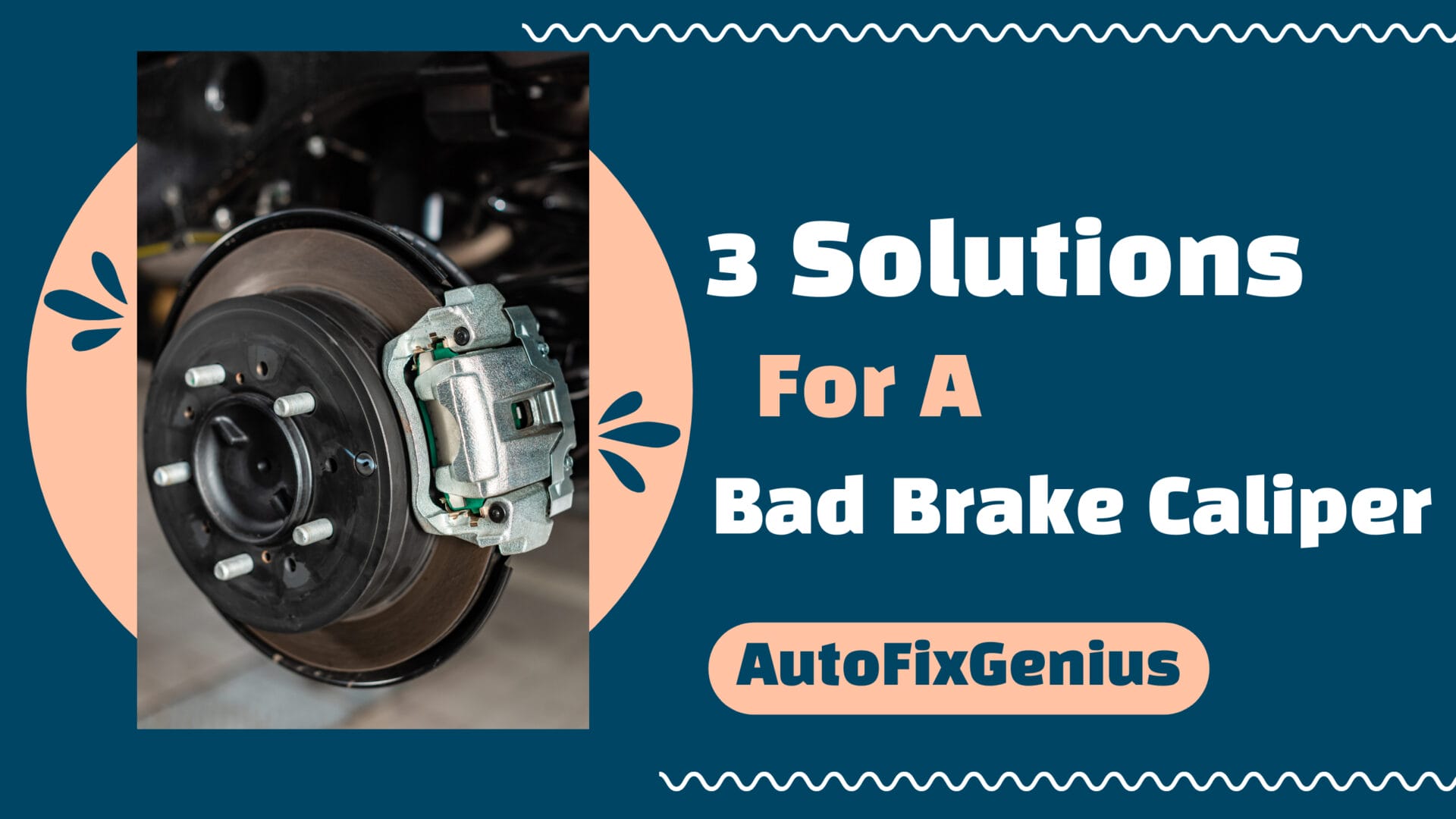
Solution-1 (Cleaning and Lubricating)
If it’s nothing serious, like a bit of rust on the caliper, simple cleaning can help you eliminate it. You don’t need to rush to a mechanic.
- Use a wire brush, sand, or bead blasting to scrub the rust until you get a clean, smooth, uniform caliper surface.
- Check the attaching hardware, too; if it’s rusty, clean it for optimal caliper performance.
- Wipe down slide pins and pistons with a microfiber cloth or towel and apply silicone or high-temperature lubricant where metal-to-rubber friction is generated. This ensures smooth movement and helps prevent future rusting.
Solution- 2 (Tightening & Loosening)
If the caliper pins or bolts are just a little bit loosened or stuck, it’s another easy-to-fix problem.
Tightening:
Grab a wrench or socket that fits the size of the pin or bolt, and make sure it’s snugly in place. Give it a gentle clockwise turn until it feels secure, but be careful not to overtighten it, as that can cause damage. If they are stuck, you can apply penetrating oil to help loosen them up.
Loosening:
Now, for loosening the pins or bolts, use your trusty pliers or a socket set and turn it counterclockwise. Apply steady pressure until the pin or bolt starts to move, and then continue turning until it’s loosened enough to meet your needs. You can apply penetrating oil to loosen them up if they’re too stuck. Ensure you have not loosened them too much.
Solution- 3 ( Replacing Brake Caliper)
Replacing the brake caliper is a simple DIY process. But if you are not confident enough, call a professional to do it for you. It will cost you around $300.
However, if you are interested in DIY, follow the below process.
What You Will Need
A wrench, socket set, brake fluid catch can, C-clamp, new brake pads, and a replacement caliper.
How To Replace A Brake Caliper
- Jack up the car, loosen the lug nuts, and remove the wheel from the wheel bearings. Disconnect the brake line and remove the faulty brake calipers.
- Then, loosen the bolts holding the brake hose to the caliper. Position the new caliper onto the mounting bracket and tighten the bolts securely.
- Replace the worn brake pad with new brake pads. Use a C-clamp to compress the piston back into place.
- Attach the brake lines to the new caliper, secure it with a bolt, and reattach it using the removed bolts.
- Put the wheel back on the wheel bearing, tighten the lug nuts, and double-check all connections before hitting the road again. Bleed the brakes for optimal performance.
Other Possible Reasons for Car Vibration
If brake caliper is not the faulty one you were looking for causing vibration, some more culprits can cause this steering wheel shake issue. I have another blog related to car vibration, explaining how warped brake rotors cause car vibration.

Let’s know about a few more possible causes of car vibration.
Wheel Alignment Issues
When your wheels are out of alignment, they’re not pointing in the same direction. This misalignment causes the tires to contact the road and cause vibrations. Ball joint wear can also be a reason for this brake judder.
Tire Imbalances
When your tires wear unevenly, they become lopsided. A worn tie rod can also be a reason for tire wear. This imbalance makes one side of the tire heavier than the other. As the tire rotates, it wobbles instead of spinning smoothly. This wobbling creates vibrations that you feel throughout your car.
Suspension Problems
Things start to go awry when any of your suspension components get damaged, like worn-out shocks or bushings. As you drive, these damaged parts can’t effectively absorb the bump and brake vibration from the road, resulting in a not-so-pleasant car shake.
Engine Issues
If you have worn-out engine mounts, they can no longer absorb the engine’s vibrations, leading to noticeable shaking in the car. Additionally, if the engine is misfiring, this can also result in uneven firing and cause vibrations.
Axle Issues
The axle is responsible for transferring power from the engine to the wheels. When the axle is bent or damaged, it can lead to vibrations that can be felt throughout the vehicle.
Warped Rotors
Warped brake rotors lead to car vibration as the uneven surface disrupts the smooth interaction between brake pads and rotors. During braking, the pads encounter variations in rotor thickness, causing an uneven grip. This inconsistency in friction generates steering wheel vibration transmitted to the steering wheel and pedal, which is felt as a shaking sensation. The warped brake rotor disrupts the harmonious braking process, resulting in an uncomfortable and potentially unsafe driving experience. Regular disc brake maintenance, including rotor inspections, is crucial to prevent warping and ensure smooth, effective braking.
Issues With Driveshaft or CV Joints:
The driveshaft is responsible for transferring power from the engine to the wheels. It consists of a series of interconnected shafts that rotate at high speed. At each end of the driveshaft, you’ll find a CV joint, which stands for constant velocity joint. These joints allow flexibility and smooth motion as the driveshaft rotates at different angles. When the driveshaft or CV joint becomes worn or damaged, it can create an imbalance in the rotation, leading to vibrations.
Transmission Issues
When your car’s transmission isn’t functioning properly, it can shake your car. This might happen if the transmission mount is worn out or damaged. The mount keeps the transmission steady, so you’ll feel vibrations if it’s not doing its job. Another culprit could be a wonky torque converter, which is like the power messenger between the engine and transmission. If it’s not working right, power gets uneven, causing shakes. Also, low or dirty transmission fluid can mess with the gears, leading to brake shudder.
How Can You Keep Calipers in Top Shape??

It’s important to note that brake calipers require regular maintenance and inspection to ensure their proper functioning. Over time, they can become corroded or develop leaks in their seals, compromising their longevity and optimal performance. Here are a few tips to help you keep your calipers in top shape.
- Regularly clean your calipers with a soft cloth or brush to remove the present and prevent further accumulation of any dirt or debris.
- Lubricate the moving parts of your calipers with a high-quality silicone spray or grease to maintain smooth movement and prevent any rusting or corrosion.
- Check the brake pads and rotor regularly for wear & tear, and replace them with brand-new rotor or brake pads if necessary.
- Monitor brake fluid levels regularly and refill as your vehicle’s manufacturer recommends. Clean fluid ensures proper caliper function.
- Avoid aggressive driving that may generate excessive heat and compromise caliper performance.
- When replacing brake components, ensure proper installation of calipers. Follow manufacturer’s guidelines for torque specifications.
- If you notice any unusual noises or vibrations while braking, have your calipers inspected by a professional to identify and address any potential issues.
By following these simple steps, you can ensure that your calipers remain in top shape and provide reliable stopping power for years.
Frequently Asked Question
Can You Drive With Bad Calipers?
No, you can’t drive with a bad brake caliper. A bad brake caliper can compromise braking efficiency, increasing the risk of accidents. Damaged calipers may not apply even pressure to the brake pads, leading to uneven braking and potential loss of control.
What Causes Brake Calipers To Fail?
Brake calipers can fail due to corrosion, worn-out seals, damaged pistons, or contaminated brake fluid. These issues compromise the caliper’s functionality, leading to brake system failure.
Are Brake Calipers Repairable?
Yes, brake calipers are often repairable if they are facing common issues like seized pistons, worn slides, or damaged seals. However, if the damage is severe, brake repair may not work. You may need to replace the brake caliper for optimal safety and performance.
Do Brake Calipers Last Lifetime?
No brake calipers don’t last a lifetime, and you can’t even count their lasting time depending on years or days. How long a brake caliper lasts depends on how long you must ride with it. A brake caliper’s maximum lifetime is 1,00,000 miles. Sometimes, it can run more if you have maintained it well, but the normal lasting time is 75,000 to 1,00,000 miles.
When Should I Replace My Caliper?
You should replace your brake caliper between 75,000-1,00,000 miles ride or when it’s damaged. Keep your eyes on the brake caliper, and whenever you notice any signs of trouble like leaks, uneven brake pad wear, or braking issues, replace them.
Closing Words
In summary, yes, a bad brake caliper can indeed cause vibrations in your vehicle. When a brake caliper malfunctions, it can lead to uneven pressure on the brake pads, resulting in uneven contact with the brake rotor and causing vibrations during braking.
I’ve shared some insights on understanding the issue and a few nifty quick fixes above, along with preventive measures to keep caliper-related vibrations at bay.
However, it is recommended that you hire a professional to resolve the problem if you need clarification

